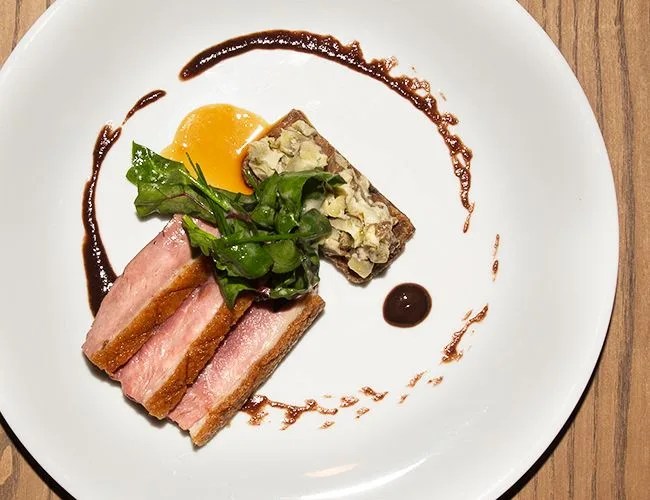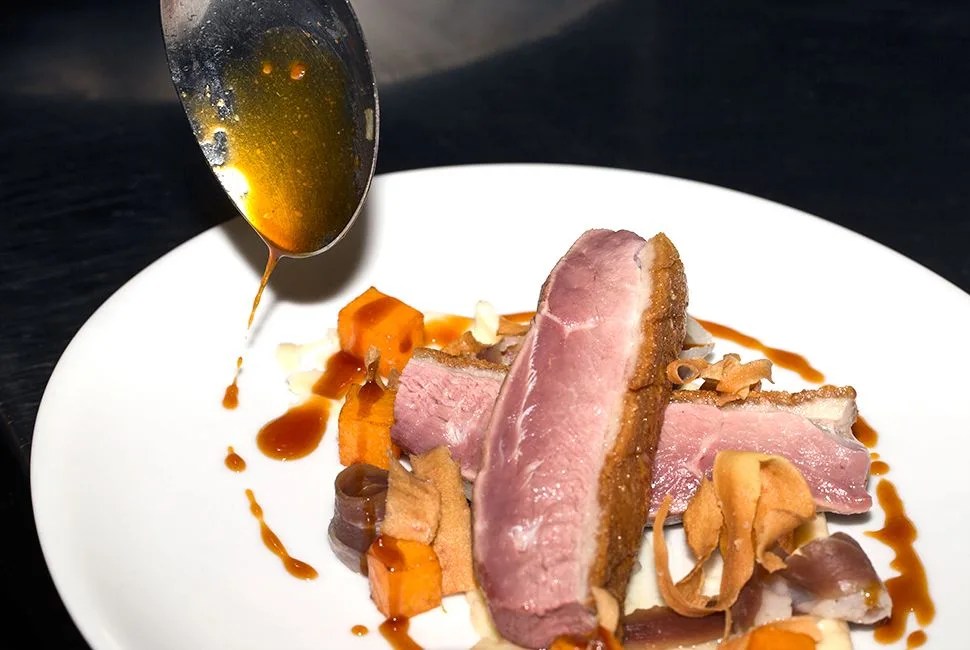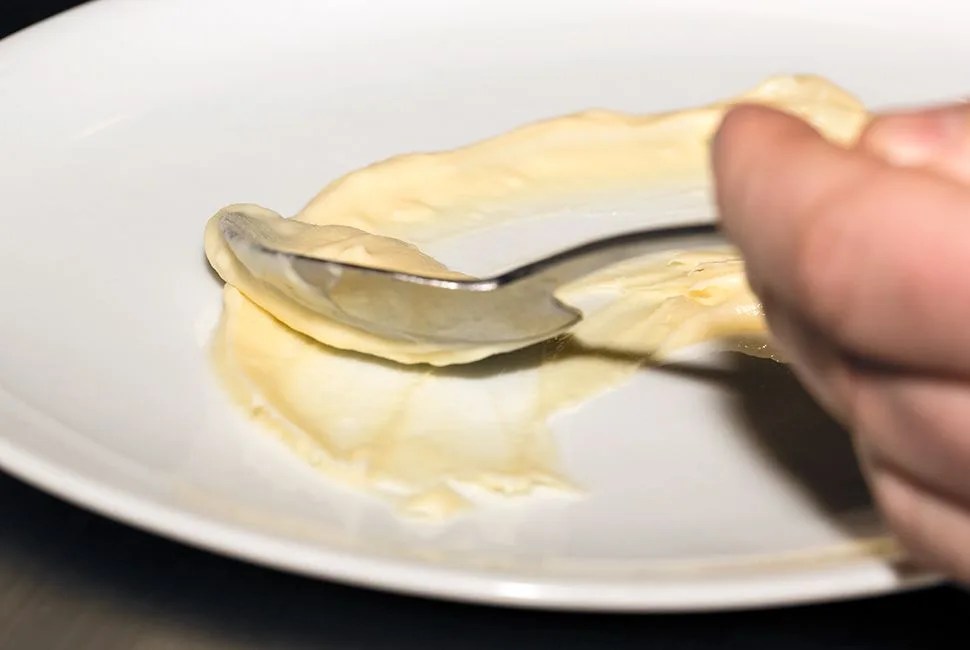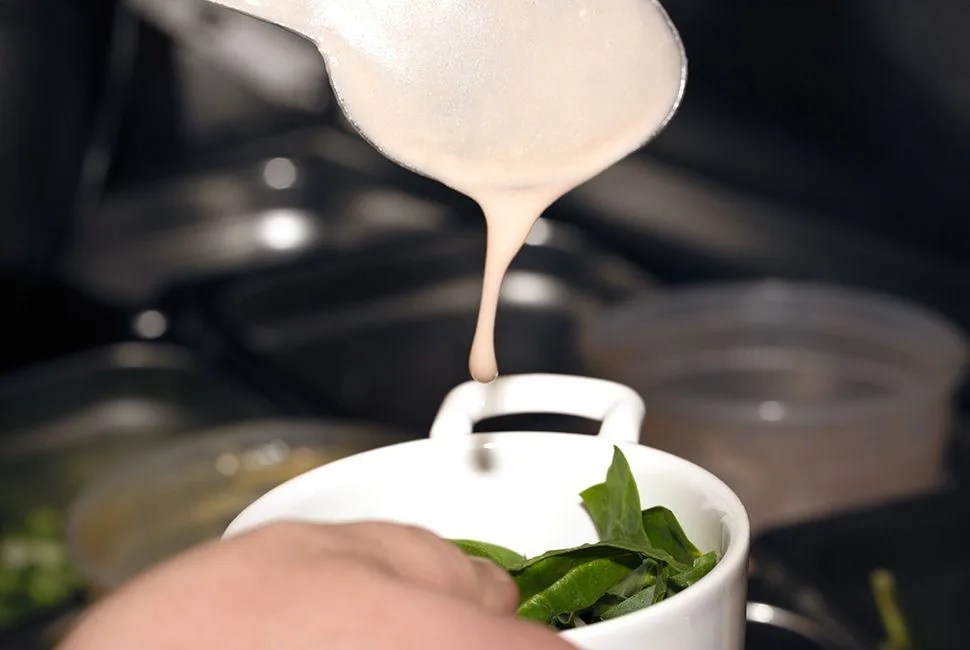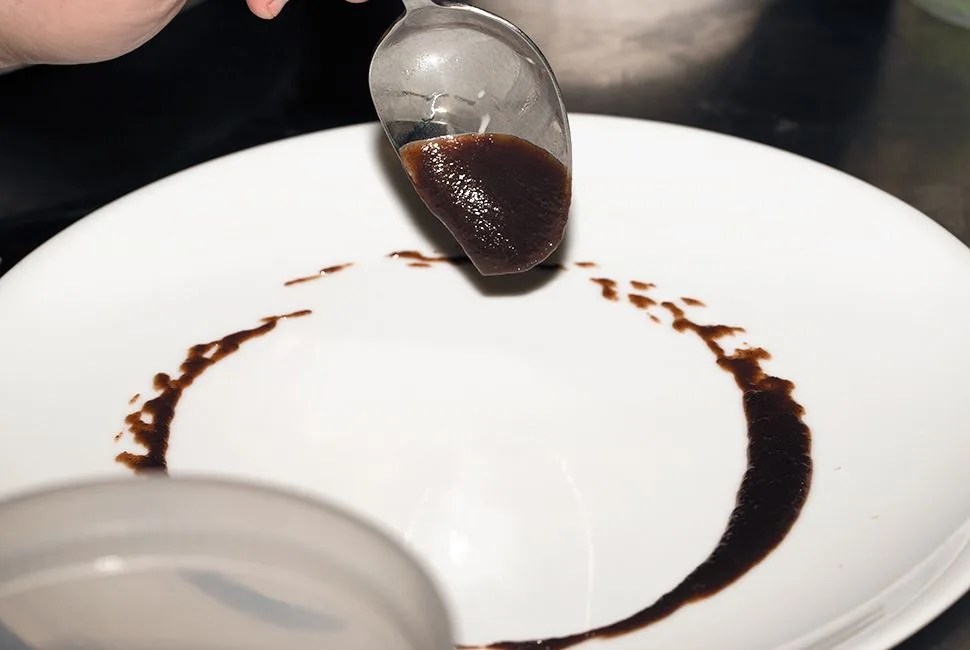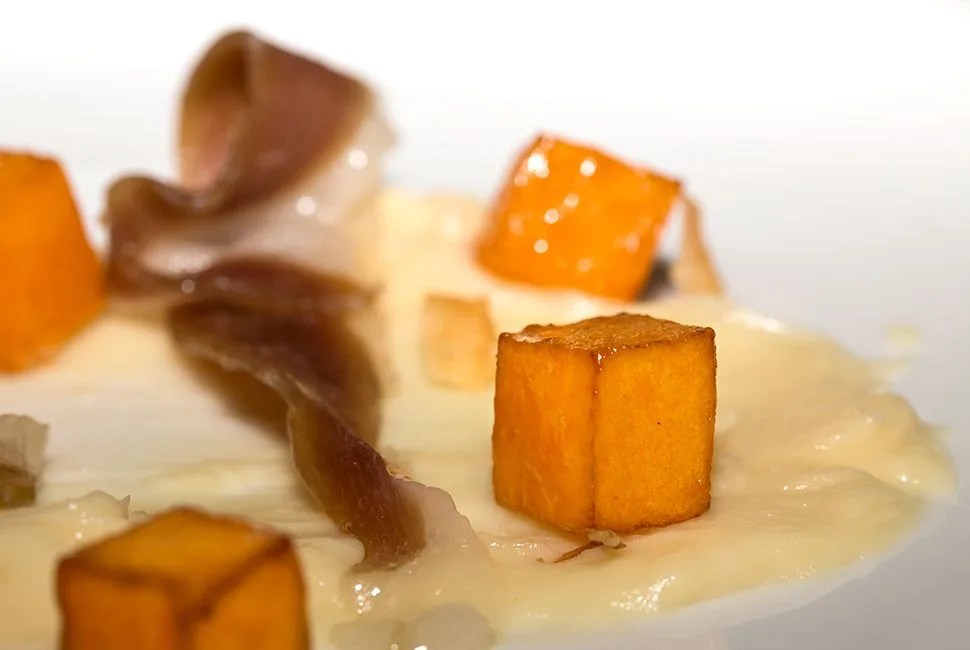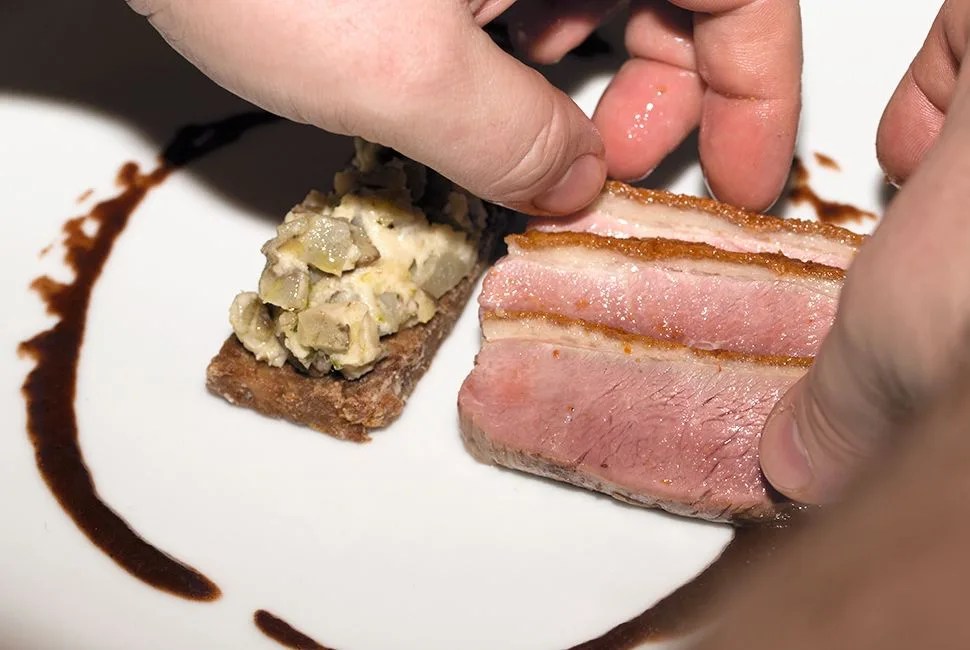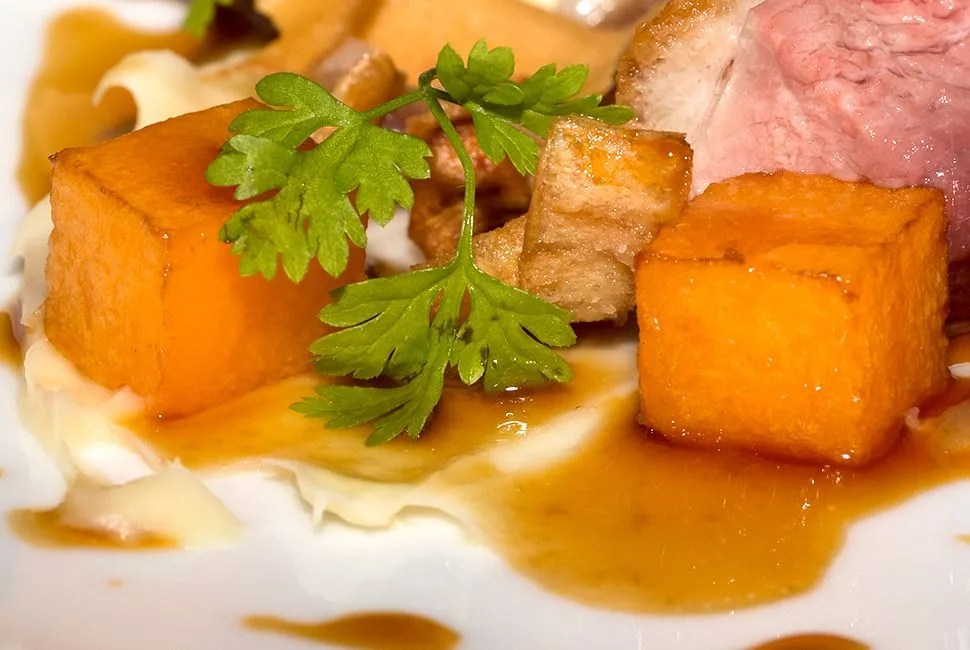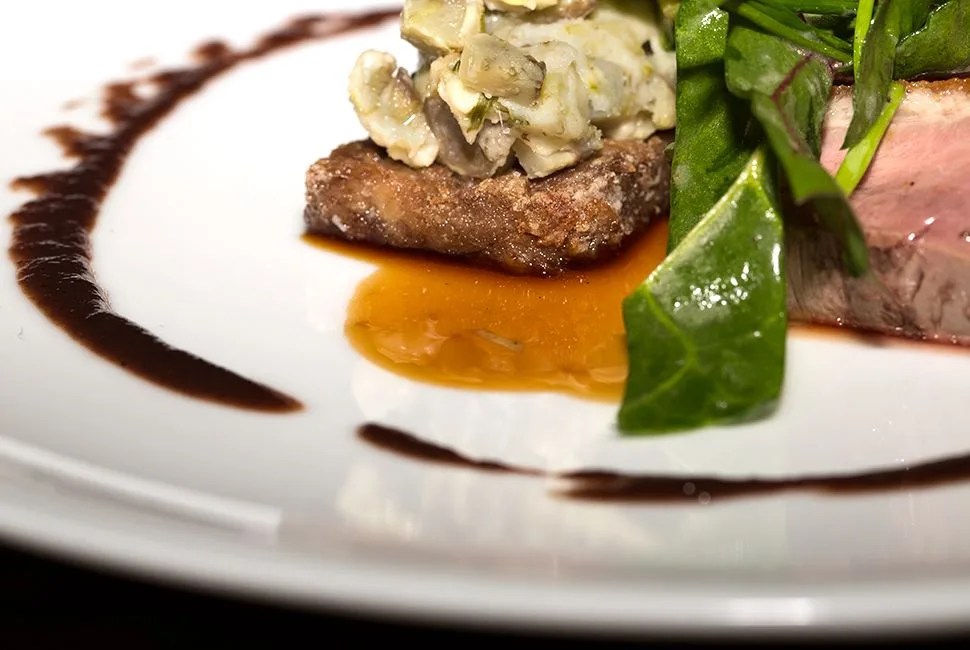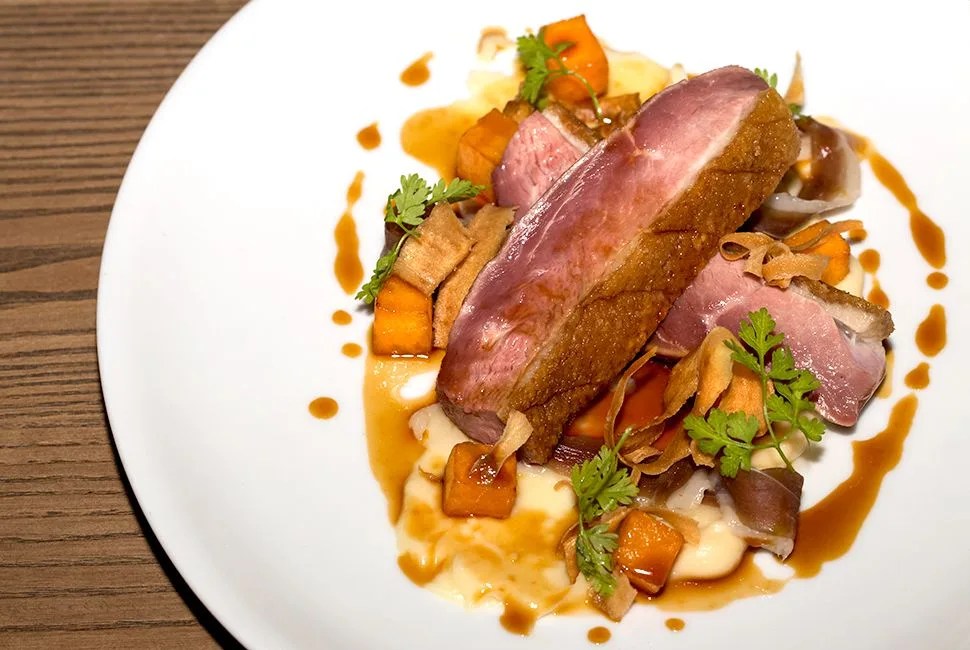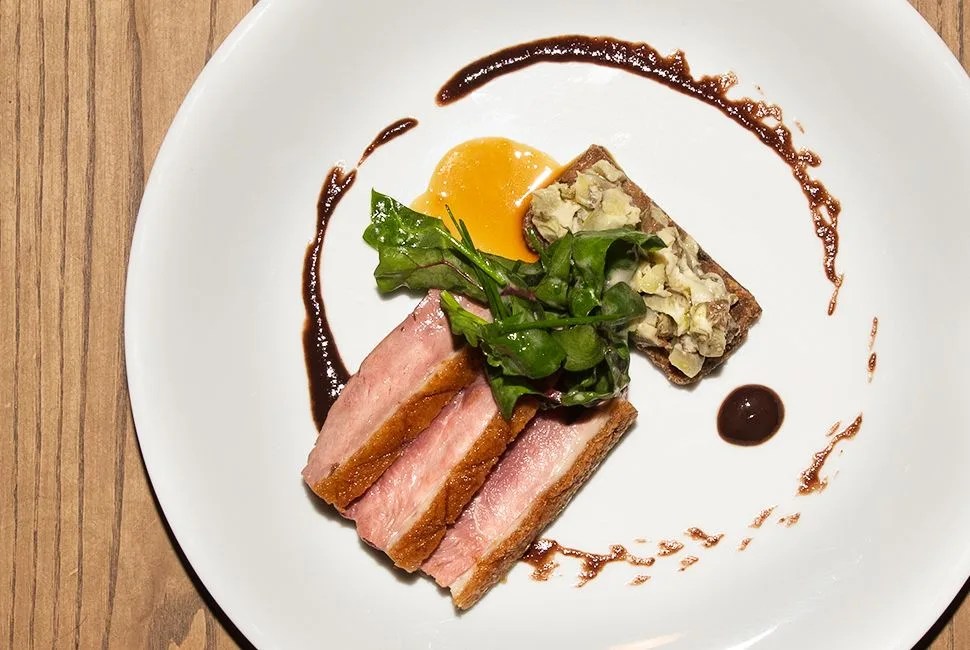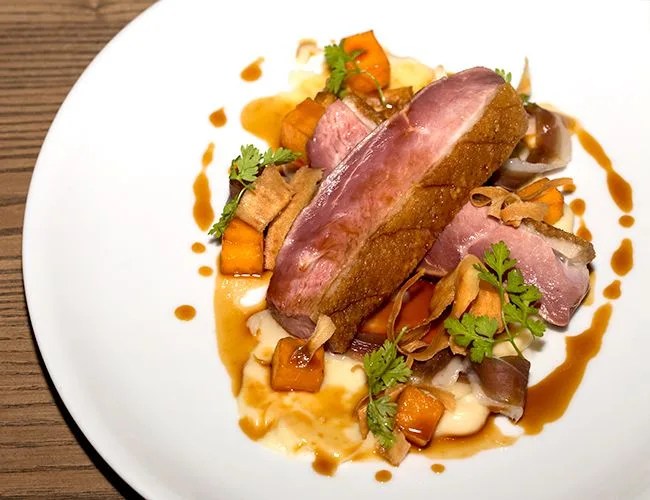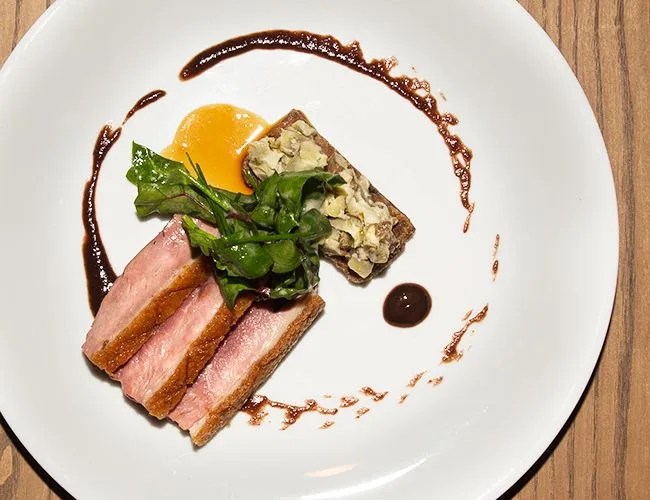11 photos
“The last thing I think about is plating,” says Jesse Schenker, chef at The Gander and Recette, two New York City restaurants. For an Iron Chef-winning, James Beard-nominated chef — Schenker’s name has also appeared on numerous lists over the past few years, including Details magazine’s “America’s Best Young Chefs,” the Zagat’s “30 Hottest Chefs Under 30” and Forbes’ “30 Under 30” Food and Wine Industry List — Schenker’s comment is a bit odd. But he insists it doesn’t mean that plating and presentation is an afterthought; it’s just directly related to the way the meal is prepared. Because no matter how the dish looks, taste is still king.
We met Chef Schenker at The Gander in New York City’s Flatiron District, where he prepared two duck entrees for us, each requiring different ingredients and preparation and showcasing different plating techniques. The first was The Gander’s duck breast with parsnip, squash and jus; the second was Recette’s duck breast leg terrine with black currant and Swiss chard. (Both recipes can be found below.) We asked him to share some of his trade secrets about plating. It turns out even if you don’t whip up world-class cuisine, you can still serve food with a five-star appearance.
1Serve the food when it’s hot. It may seem like a no-brainer, but Schenker emphasizes that spending too much time arranging the food on the plate allows it to cool. If the food isn’t hot, it tends to look rubbery and less appetizing. If it’s a salad, pour the dressing at the last possible moment. If you apply it too early, the dressing’s acidity will cause the lettuce to wilt, deteriorate and brown. “I also like to add bright, colorful touches to salads,” says Schenker, “like red and white ‘candy cane’ beets and golden cherry tomatoes.”
2 Make the entree the focal point. When serving, you want the meal to have more negative space. That way the entree will stand out more and appear fancier than it might be. Schenker says that it’s not vital that the food be centered on the plate, but it’s common practice for many chefs. In The Gander’s recipe, the duck breast is centered and placed on top of the other ingredients (prosciutto, parsnip chips and squash). However, in Recette’s dish, the duck breast is slightly offset and placed directly on the plate perpendicular to the terrine, giving the dish a feeling of more intentional composition. Schenker suggests using white plates to help the food stand out even more.
3Less is more. “I try to stick to using under five ingredients in my dishes,” says Schenker, “because I don’t want to overcomplicate it.” If you try to use too many food elements on one plate, he suggests that the dish may look sloppy. Schenker’s Recette dish is a good example of this, with nothing more than the puree, terrine, Swiss chard and duck breast on the plate — and each is modestly portioned.
4Layer what you want in one bite. “I like to layer different flavors and textures into one bite,” says Schenker. “Start with an artful smear or dollop of sauce, place the protein on top, and then top it off with fresh greens,” says when talking about his Recette dish. That way, with one cut you can get all the ingredients in one bite. When plating meats on the end, like in The Gander’s dish, Schenker uses “a stacking technique” to create height. This also showcases the “quality of the protein.” The idea is that with one cut, the eater will be able to fork portions of the duck, parsnips, squash and sauce all at once. Basically it makes what Schenker calls “the perfect bite” easier for the diner.
5Put the accoutrements on the side. “For example when plating a charcuterie board, I like to place extra spices or sauces that can be dolloped in small amounts around the dish,” says Schenker. He suggests using different colorful elements — “like a grainy spicy mustard or fig jam, miniature gherkin pickles, or even sprinkling the board with dried cranberries” — to entice diners to experiment with different flavors and textures. Schenker points to his Recette dish where, for example, the puree is spread around the entree, so diners can flavor the duck with each bite in the amount that they enjoy.
